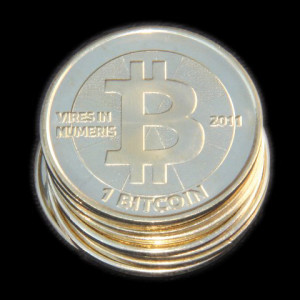Why Is the Fed Punishing My Parents? – Article by Shawn Ritenour

In September 1993, President Bill Clinton reassured his radio audience that “if you work hard and play by the rules, you’ll be rewarded with a good life for yourself and a better chance for your children.” Picking up that theme over eighteen years later, President Barack Obama affirmed that “Americans who work hard and play by the rules every day deserve a government and a financial system that does the same.” The trouble is neither the government nor the financial system backed by the Federal Reserve rewards people like my parents, who have worked hard and played by the rules their entire lives, only to have their savings wither away.
Instead, Federal Reserve officials and the intelligentsia who support them are continuously working to make their lives more difficult, frightening the masses of what shoppers look for every day — lower prices. Price deflation, the cry, is disastrous for the economy. They worry that lower prices will reduce profits, leading to shutdowns and lay-offs and that lower prices make it harder for people to pay their debts. Sound economic theory and history, however, both indicate that price deflation is nothing the social economy needs to fear. If prices fall because the economy is more productive, this is unambiguously positive. However, if prices fall because people spend less, their desire is for larger real cash balances. Falling prices help them achieve their goal, which precisely is the purpose of economic activity.
Lower prices and wages can make it harder to pay fixed debt. This, however, serves as an excellent incentive to stay out of debt in the first place, as my parents have done as a result of significant sacrifice. Before creating even more money out of thin are to ward off lower overall prices, we should at least consider some of the ethical issues involved.
Many men from my father’s generation are not unlike John Adams who wrote to his wife that he “must study politics and war, that our sons may have liberty to study mathematics and philosophy.” My father embarked for twenty years of hard labor in a meat packing plant providing for his family until he lost his job due to his union pricing him and his fellow workers out of a job. When his plant closed in the mid-1980s, he embarked on a second successful career with my mother operating their own barbecue business for another twenty-plus years. I saw firsthand the challenges they faced trying to keep quality up and costs down, while producing top-drawer barbecue meat and sandwiches for a demand that was always uncertain. I saw the stress on my mother’s face one week in the early days when they netted a mere $15 before taxes. My father indeed “studied” meat packing and barbecue, in part, so I could go to college and become an economist and college professor.
Additionally, Mom and Dad had the foresight and character to make the sacrifices necessary to stay out of debt. Indeed, they are Paul Krugman’s worst nightmare — a family determined not to live beyond their means. Now retired, like many in their generation they are enjoying life the best they can on an almost fixed income. Because they have no debt, they have been able to live without tremendous economic hardship thus far. The Federal Reserve’s inflationism, however, increasingly makes life for them more difficult as steady price inflation daily chips away at their livelihood. Since 2009, for example, the Consumer Price Index has increased over 9 percent. This masks, however, significantly larger price increases for important necessities. Prices of dairy products are up almost 17 percent since 2009. Gasoline prices are up almost 11 percent despite the recent decline. Prices for meat, poultry, fish, and eggs have increased a whopping 26 percent since 2009. Higher overall prices do not help people like my parents at all. They instead act as a thief, snatching wealth away from them in the form of diminished purchasing power. What they long for is to see the value of their savings increase. Far from creating economic hardship for them, lower overall prices would be a boon.
Both sound economics and ethics, therefore, demand that we give up the anti-deflation rhetoric and the inflation it fuels. Charity demands that we cease striking fear into the hearts of the masses, softening them up for ever higher prices. The Federal Reserve should stop punishing people like my parents who have worked hard and played by the rules their whole lives. After all, what did they ever do to Greenspan, Bernanke, and Yellen?
Shawn Ritenour teaches economics at Grove City College and is the author of Foundations of Economics: A Christian View.
This article was published on Mises.org and may be freely distributed, subject to a Creative Commons Attribution United States License, which requires that credit be given to the author.



